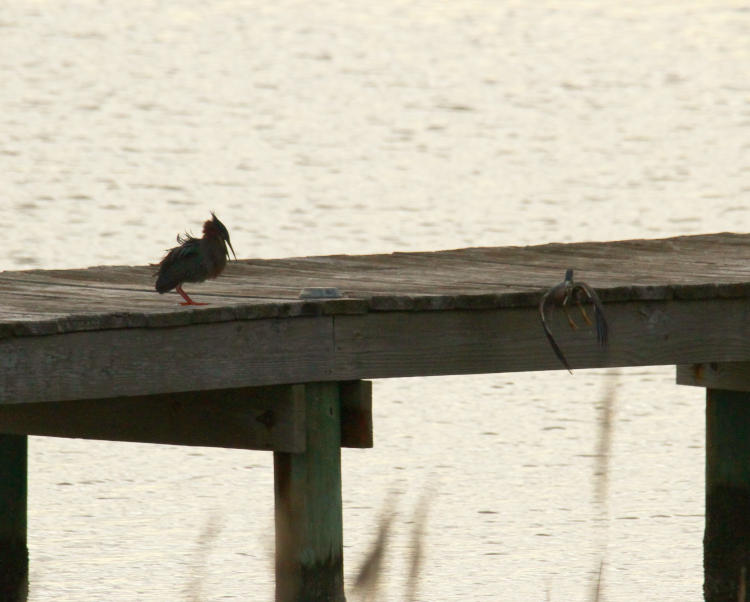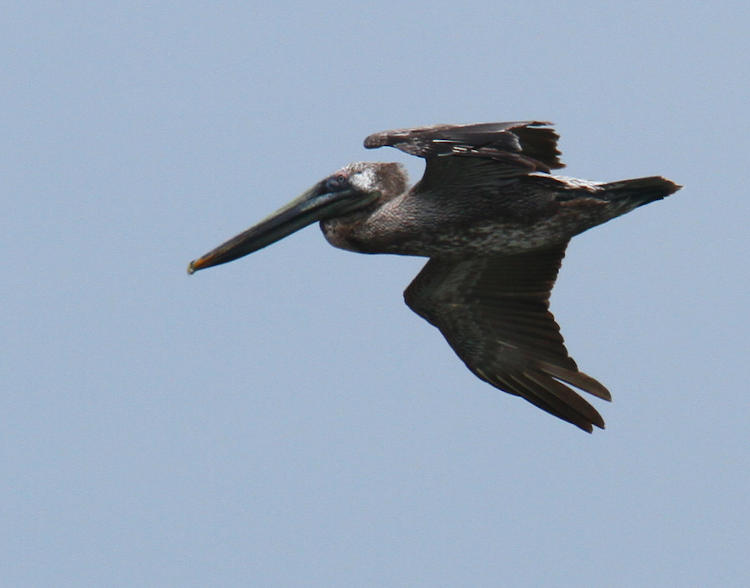So let’s see, what to tackle with the first of the beach posts? How about a familiar subject?
We’ll start with sunrise on the first two days. We’d driven out Saturday and met friends out there, so it turned out to be a late night, and I did a little poking around in the dark to see if the marsh crabs were active (they were, a little) but without any intention of doing photography or video. So Sunday morning, the first opportunity that I had, I didn’t even set the alarm, but woke up near that time anyway. Didn’t matter; the skies were near overcast, and our friends, always early risers, said that the sun appeared only briefly before ascending into clouds. Monday morning, however, I set the alarm and was out on the beach ready, to have even worse conditions.

And that pretty much spelled the tone for the day, remaining semi-overcast and not providing a lot of opportunities. That light quality, however, can be good for colorful subjects, and I took momentary advantage of this when passing some wildflowers near the sound.

But to get back on topic, we soon realized that a green heron (Butorides virescens) was hanging around, quite close. It was exceptionally shy and provided few opportunities for detail shots, and from the frequency of appearance and the calls that I kept hearing, I was suspicious that it had a nest in the thicket right off the back of the property, bordering the sound. This was a stretch only a few meters wide before giving way to the marsh grasses in peat too waterlogged to walk in, and yet it was impenetrably thick, offering no visibility or entry to anything larger than a vole. I tried, several times, to determine if there really was a nest in there, but achieved nothing. Seeing it from the sound side with the long lens might have helped, but there was no way I was bringing the regular camera equipment along in a kayak, and the waterproof Ricoh didn’t have the focal length. Eventually, I got lucky enough to see the heron perch on the railing when I was just out of sight behind the marsh reeds, and could slowly lean out and snag a few frames.

One of our friends got a bit luckier though, catching it when it perched on a tree in the thicket while she was on the deck, and snagged a much nicer portrait while I was pretty much exactly where the heron above was, no camera in hand.

With as much luck as I’ve had with the local green herons this spring, this one was much more in line with my previous experiences, remaining distant and aloof. Or maybe I shouldn’t say “one,” because another evening it became evident there were more, and I suspect we were watching courting behavior. On the neighboring dock, we could see two flitting around in close proximity, taking perches only a few meters apart, soon joined by a third. All three did not deign to get into the frame at the same time, though.

They were joined by a pair of willets, I think only because it was near dusk and the active time for birds before settling in for the night. Both species are pretty much impossible to determine the gender of on sight, but the two herons on the dock soon revealed themselves to be males, since a territorial dispute followed quickly.

The one on the left fluffed out his feathers, dropped his beak to his chest, and trotted purposefully towards the other, who quickly chose not to dispute the claim and flew off a short distance, seen here at the edge of the dock if you look closely – distance, angle, and lighting all could have been better of course. I never understand why so many species choose to do their distinctive behavior where it’s hard to see them. The dominant male soon returned his attentions to what must have been the female, but as you can see, the marsh reeds were obscuring a lot and we never saw if they consummated this courtship or not. And I only say this because we were more successful, later on with another species, but I’m keeping my promise to do shorter posts this time, so we’ll wrap up with a brown pelican (Pelecanus occidentalis) that cooperatively did a closer pass over the sound while the light was still decent. This remained the best photo of pelicans that I got for the trip, though.

More to come – there’s only, oh, forty-some photos in the folder awaiting their turns…




















































